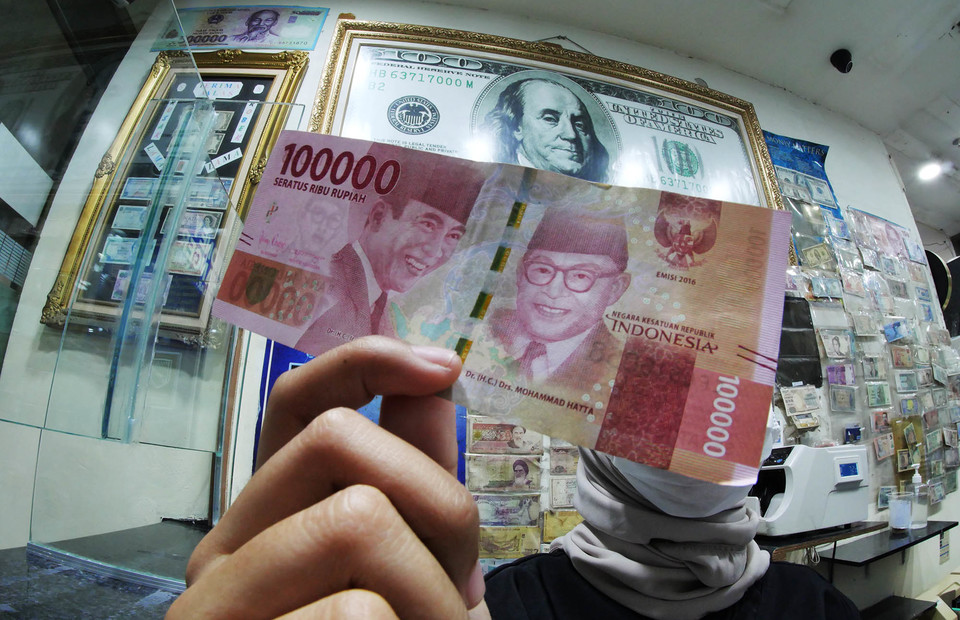Android's Design Refresh: Attracting A Younger Audience?

Table of Contents
Material You and its Appeal to Younger Users
Google's Material You design language is a cornerstone of Android's recent refresh. Its focus on personalization and intuitive UI/UX aims to resonate with younger users.
Personalization and Customization
Younger generations prioritize self-expression and unique digital identities. Material You delivers on this with its extensive customization options:
- Dynamic theming: Users can choose a base color, and the system intelligently adapts colors across the interface, creating a cohesive and personalized look. This is far beyond the simple theme choices of older Android versions.
- Customizable widgets: A wide array of widgets allows for a highly personalized home screen layout, catering to individual preferences and information needs. This goes beyond simple app icons and offers interactive elements.
- Color palettes: The ability to select from various color palettes allows for extensive visual customization, empowering users to express their personal style. This offers a level of control missing in many competitor operating systems.
Compared to iOS's more limited customization, Android's approach offers a refreshing level of control. The ease of use of these features is a key factor in user adoption. The intuitive drag-and-drop interface and clear visual feedback make personalization simple and enjoyable, even for first-time users.
Improved UI/UX for Gen Z and Millennials
Material You isn't just about aesthetics; it's about improved user experience. The design changes reflect the preferences of a generation raised on visually rich digital experiences:
- Intuitive navigation: Improved navigation menus and gestures make it easier to find information and complete tasks. The streamlined approach eliminates unnecessary steps, valuing efficiency.
- Modern font styles: Updated font styles enhance readability and contribute to a cleaner, more modern look and feel. The choice of fonts reflects current design trends.
- Smooth animations: Subtle animations and transitions provide visual feedback and create a more engaging and satisfying user experience. This adds a touch of playful sophistication appreciated by younger users.
These improvements are evident in many pre-installed apps and readily extend to third-party apps embracing Material You. The vibrant colors, smooth transitions, and minimalist design elements align perfectly with the preferences of younger users accustomed to visually appealing interfaces.
The Role of Apps and the App Ecosystem
Android's success in attracting younger users depends heavily on its app ecosystem. A vibrant and visually appealing app ecosystem is crucial.
Appealing to Younger App Users
The overall aesthetic of the OS directly impacts the perception of individual apps. Material You encourages app developers to adopt a consistent design language, leading to a more cohesive and visually pleasing user experience.
- Material You adoption: Many popular apps have updated their designs to embrace Material You, ensuring a consistent and appealing experience across the platform. This creates a unified aesthetic, enhancing overall satisfaction.
- New youth-centric apps: The Android app store actively promotes apps targeted at younger demographics, providing a wider range of options tailored to their specific needs and interests. This is vital for maintaining market share.
- Social media integration: Seamless integration with popular social media platforms further strengthens Android's appeal to younger audiences who are heavily engaged on these platforms.
Gaming and Mobile Entertainment
For many younger users, mobile gaming is a significant part of their digital experience. Android's improvements impact this heavily:
- Enhanced graphics capabilities: Newer Android versions boast improved graphics capabilities, allowing for richer and more immersive gaming experiences. This is a key selling point for those looking for cutting-edge mobile gaming.
- Improved performance: Optimizations have improved overall performance, leading to smoother gameplay and fewer lag issues. This is especially beneficial for younger users who often play graphically demanding games.
- Integration with gaming platforms: Stronger integration with popular gaming platforms and services increases the appeal for young gamers. This simplifies access to their favorite games and communities.
Competition and Market Trends
Android's success in attracting younger users is directly influenced by competition and evolving market trends.
iOS vs. Android: The Youth Market
The Android vs. iOS debate continues, especially regarding youth market share:
- Market share comparison: While iOS historically held a stronger position among younger users, Android's market share is steadily increasing, especially in developing economies. This demonstrates a shift in user preference, particularly influenced by price points.
- User preference analysis: User reviews reveal a preference among some younger users for Android’s customization options and open-source nature. This is a significant differentiator compared to the more restrictive environment of iOS.
- Strengths and weaknesses: Android excels in personalization and affordability; iOS is often favored for its perceived ease of use and perceived superior app quality. However, the gap is narrowing as Android improves.
Emerging Trends in Mobile Design
Keeping pace with emerging trends is vital for attracting younger users:
- Foldable phones: Android’s support for foldable devices positions it well for future mobile design trends.
- Augmented reality integration: Increased integration with AR technologies opens up exciting possibilities for engaging younger users.
- Privacy features: Enhanced privacy features address a growing concern among tech-savvy users, particularly younger generations.
Adapting to these emerging trends while maintaining design consistency is a significant challenge for Android. Failure to do so could leave it lagging behind competitors.
Conclusion
Android's design refresh, spearheaded by Material You, represents a significant effort to attract younger users. While the increased personalization options and improved UI/UX are steps in the right direction, the competition remains fierce. Android's success will depend on its ability to consistently deliver a superior user experience, adapt to emerging technologies, and maintain a vibrant and appealing app ecosystem. The fight for the youth market is far from over.
Are you convinced that Android’s design refresh is successfully targeting younger audiences? Share your thoughts in the comments! Let’s discuss Android’s design and its future appeal to younger generations. What other design changes could make Android even more appealing to this crucial demographic?

Featured Posts
-
 Indonesia Reserve Levels Fall Impact Of Rupiah Depreciation
May 10, 2025
Indonesia Reserve Levels Fall Impact Of Rupiah Depreciation
May 10, 2025 -
 Calls For Transgender Equality Intensify Bangkok Post Coverage
May 10, 2025
Calls For Transgender Equality Intensify Bangkok Post Coverage
May 10, 2025 -
 Ajaxs Brobbey Strength And Power Key To Europa League Success
May 10, 2025
Ajaxs Brobbey Strength And Power Key To Europa League Success
May 10, 2025 -
 9 Maya Pochemu Makron Starmer Merts I Tusk Ne Poekhali V Kiev
May 10, 2025
9 Maya Pochemu Makron Starmer Merts I Tusk Ne Poekhali V Kiev
May 10, 2025 -
 Concarneau S Impose A Dijon 0 1 En National 2 Saison 2024 2025
May 10, 2025
Concarneau S Impose A Dijon 0 1 En National 2 Saison 2024 2025
May 10, 2025
